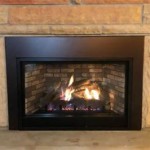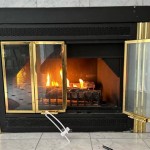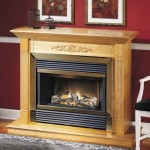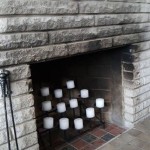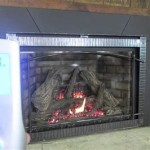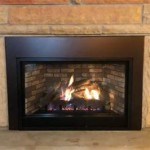```html
DIY Table Top Ethanol Fireplace: A Guide to Creating Ambiance
The allure of a flickering flame has captivated humanity for millennia. The primal connection to fire offers warmth, light, and a sense of calm. While traditional fireplaces require significant infrastructure and maintenance, a table top ethanol fireplace provides a modern and portable alternative. Constructing a DIY version allows for personalized design and cost-effectiveness. This article details the process of building a safe and aesthetically pleasing table top ethanol fireplace.
Key Considerations Before Construction: Safety and Ventilation
Prior to embarking on the construction of a table top ethanol fireplace, prioritizing safety is paramount. Ethanol fireplaces, while generally safe when used responsibly, do release heat and carbon dioxide. Ensuring adequate ventilation in the room where the fireplace will be used is crucial. Avoid using the fireplace in small, enclosed spaces without proper airflow. A functional carbon monoxide detector in the room is strongly recommended. Furthermore, selecting fire-resistant materials for the fireplace's construction is essential.
The choice of ethanol fuel is also a significant safety consideration. Only use ethanol fuel specifically designed for fireplaces. Avoid using denatured alcohol or other fuels not intended for this purpose. These alternatives may produce harmful fumes or burn unpredictably. Always follow the manufacturer's instructions for the specific ethanol fuel being used. Never refill the fuel reservoir while the fireplace is still burning or hot. Allow the fireplace to cool completely before adding more fuel.
Lastly, keep flammable materials away from the fireplace during operation. Curtains, paper, and other combustibles should be at a safe distance to prevent accidental ignition. The fireplace should be placed on a stable, non-flammable surface. Supervise the fireplace while it is burning, and never leave it unattended. These safety precautions are essential for the safe enjoyment of a table top ethanol fireplace.
Materials and Tools Required
The materials required for constructing a table top ethanol fireplace are relatively basic and readily available. A primary component is a fire-resistant container to house the ethanol fuel. This could be a stainless steel bowl, a ceramic pot (ensure it is heat-resistant), or a repurposed metal container. The size of the container will dictate the fuel capacity and the burn time of the fireplace.
The fuel reservoir will require an insert to hold or absorb the fuel. Stainless steel wool or ceramic fiber is commonly used for this purpose. These materials prevent the fuel from sloshing around and help to regulate the flame. Decorative elements such as river rocks, glass beads, or ceramic logs can be added around the fuel reservoir to enhance the aesthetic appeal of the fireplace.
The tools required for construction are minimal. Safety glasses and gloves are recommended for handling materials. Metal cutting tools, such as tin snips or a metal saw, may be needed if modifying a metal container. Measuring tools, such as a ruler or tape measure, will ensure accurate dimensions. A level will ensure the fireplace is stable and level on the table top. A fire extinguisher should be readily available as a safety precaution during the initial testing of the fireplace.
Step-by-Step Construction Process
The construction process begins with preparing the fire-resistant container. Ensure the container is clean and free of any debris. If using a metal container, smooth any sharp edges to prevent injury. For ceramic containers, inspect for cracks or imperfections that could compromise their structural integrity under heat.
Next, prepare the fuel reservoir. If using stainless steel wool, loosely pack it into the container, leaving enough space for the ethanol fuel. If using ceramic fiber, cut it to size and line the container. The purpose of the reservoir is to absorb and hold the fuel, allowing it to evaporate slowly and produce a consistent flame. Avoid overpacking the reservoir, as this can restrict airflow and affect the burn quality.
Carefully pour the ethanol fuel into the reservoir. Do not overfill the container; leave some space at the top to prevent spills. Allow the fuel to saturate the absorbent material before attempting to ignite it. Once the fuel is saturated, use a long-handled lighter or a barbecue lighter to ignite the fuel. Maintain a safe distance during ignition, as the initial flame may be larger than expected.
After the flame is established, carefully add the decorative elements around the fuel reservoir. River rocks, glass beads, or ceramic logs can be arranged to create a visually appealing display. Avoid placing these elements directly in the flame, as this can affect the burn quality and potentially release harmful fumes. Observe the fireplace for a period of time to ensure it is burning safely and consistently. Adjust the amount of decorative elements or the fuel reservoir if necessary to achieve the desired flame size and appearance.
Regular maintenance is essential for maintaining the safety and performance of the table top ethanol fireplace. Allow the fireplace to cool completely before cleaning. Remove any debris or soot that may have accumulated around the fuel reservoir. Periodically replace the absorbent material in the fuel reservoir to ensure optimal fuel absorption. Dispose of used ethanol fuel properly according to local regulations. By following these construction and maintenance guidelines, a safe and aesthetically pleasing table top ethanol fireplace can be created.
```
Diy Tabletop Fire Pit Mighty Mrs Super Easy Recipes

Diy Indoor Tabletop Fire Pit With Beautiful Flame Making A Portable Ethanol Bio Fireplace

Diy Tabletop Fire Pit Mighty Mrs Super Easy Recipes

You Have To See These Diy Non Toxic Table Top Fire Pits

Diy Project Build Your Own Outdoor Bioethanol Fireplace

You Have To See These Diy Non Toxic Table Top Fire Pits

12 Best Ethanol Fireplace Ideas

Spark Of Inspiration Ethanol Fireplace Bioethanol Diy

How To Make A Backyard Fire Pit For

Livingandhome Round Bio Ethanol Tabletop Fireplace With Flame Guard Diy At B Q
Related Posts

